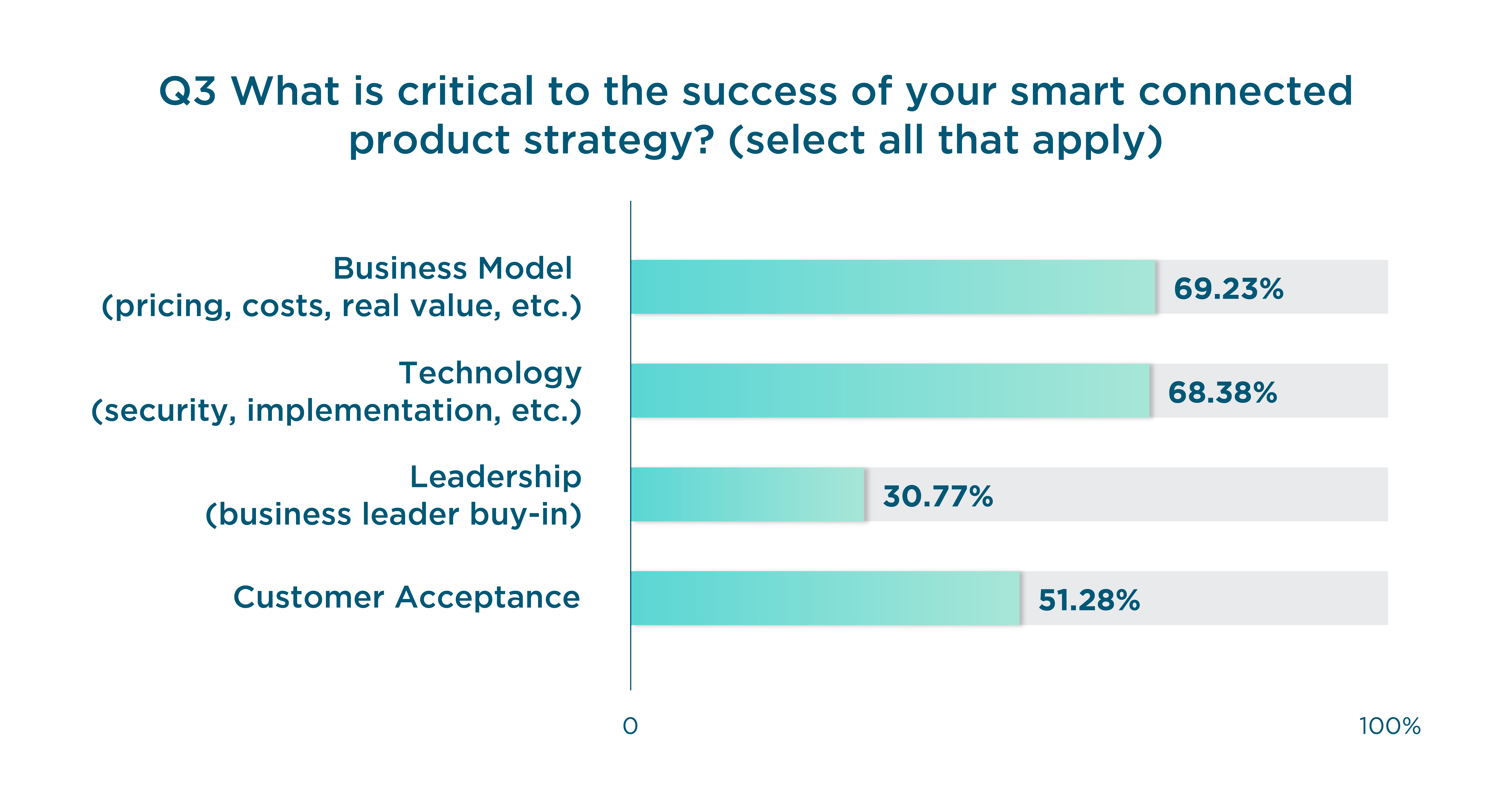SPD Series Feature 3: Critical Success Factors
Smart product development is when technology and ideas come together and create a revolutionary user experience for consumers, and informed decision support for manufacturers. We’ve already covered the convergence of multiple technologies (Part 1) and the business objectives (Part 2) that set the stage for moving up the value chain.
Even the best laid plans can go awry if one isn’t cognizant about all the factors that can affect the success of a smart product development initiative. Many good starts have been squandered when certain aspects aren’t given due consideration. For instance, the business model and technology selection still rank highest amongst the attributes that can define the success for organizations who intend to, or have already started, their connected product journey.

Factors respondents deemed critical to their smart connected product strategy
A clear set of objectives is the first, most critical step to take before discussing the means to reach them. Some important questions to consider are:
- What is the business use case where we see the best returns, or which solves our biggest challenges?
- How do we know it’s worth going after?
- What numbers are we trying to reach?
Having answered these as clearly as possible, one should turn toward the technology dimension – another critical piece in your connected product development jigsaw.
Many smart connected product development initiatives have sputtered despite having clear objectives because it can seem impossible to answer a seemingly simple question: Where do we begin? As organizations invest in technologies, they build dependencies on them. And “reinventing the technologically superior wheel” is a concept best left to textbooks if it only results in business disruption or investments whose impact vanishes as new technology emerges.
The answer that predicament, organizations must be honest and ask themselves:
- What are our current strengths we can build upon?
- Do we have any preferences towards a specific technology? Why?
- Does it help us achieve our future goals, consistently?
- Does it protect our investments in the legacy technology / applications?
- Does it futureproof our investments in new technology?
Once they frame a measurable business use case and identify the technology direction, it’s simple to put the other pieces in place.
That brings us to the third important factor in defining the success of any connected product initiative – customer acceptance. Innovation is all about creating unique value. It doesn’t matter if you’re focusing on B2B, B2B2C, or B2C. In the end, your customers will invest in products that solve their toughest challenges, improve their revenue, and/or create an outstanding experience. The key question that puts the customer in the center of all the efforts is simple: Why? Innovations is all about understanding your customers and doing what’s best for them; leveraging real operational data, allowing easy customization, and improving their experience are paramount.
It takes an integrated approach spanning business use case, technology, and customer acceptance to arrive at any solution. From concept design and product engineering, to software development and building mechanisms to communicate with assets, everything must be mindful of the big picture. Organizations need toolsets that have open architecture that fits into their existing framework, and a partner who has the capability to help them build and deliver scalable solutions to their end customers – Altair wants to be that partner.
In Part 4, the final entry of the series, we’ll dive deeper into the technology-related challenges that arise while building smart connected products.
In the meantime
- Sign up for a free trial of Altair® SmartWorks™
- Read up on SmartWorks to harness the full power of AI, analytics, and the Internet of Things (IoT) with Altair’s next-generation, cloud-native enterprise data ecosystem
- For more details on smart connected product development – download the Smart Product Development eGuide
- Read Part 1: Convergence
- Read Part 2: Futureproofing




